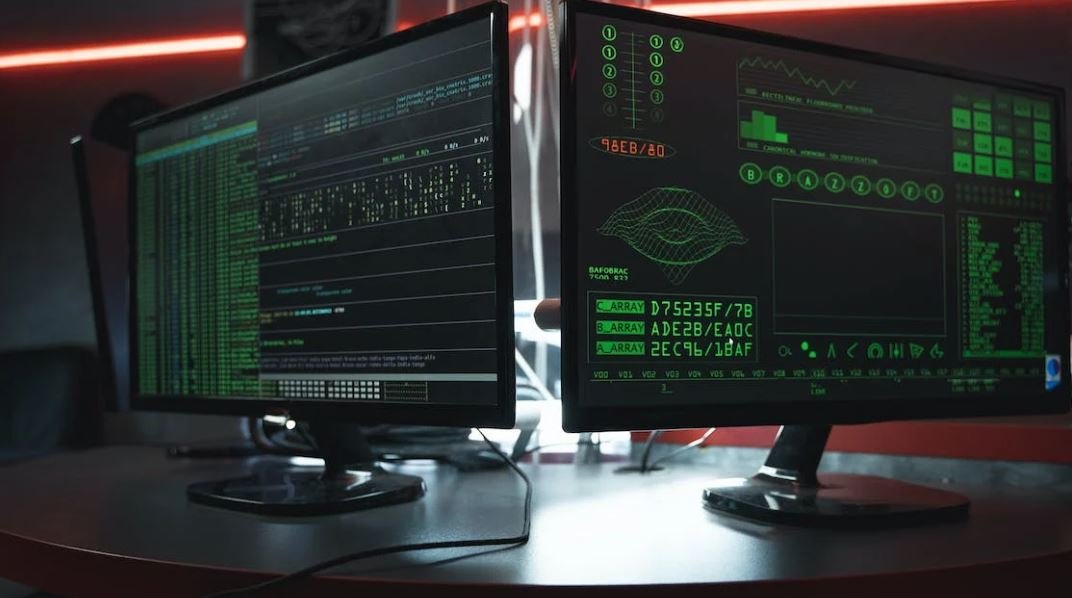AI in Project Risk Management
In recent years, the adoption of Artificial Intelligence (AI) has revolutionized various industries, including project management. AI has proven to be a powerful tool in improving project risk management, helping organizations proactively identify and mitigate potential risks before they escalate into major issues. By leveraging AI capabilities, project managers can enhance decision-making, increase efficiency, and ultimately drive project success.
Key Takeaways
- AI has transformed project risk management by enabling proactive risk identification and mitigation.
- AI helps project managers make data-driven decisions and improve overall project efficiency.
- The integration of AI into project risk management enhances risk assessment and prediction accuracy.
- AI augments project teams by automating routine tasks and freeing up time for strategic planning.
One of the key benefits of AI in project risk management is its ability to process large volumes of data and identify patterns that might not be apparent to human project managers. *This enables organizations to gain valuable insights and make data-driven decisions.* By analyzing historical project data, AI algorithms can identify potential risks, anticipate their likelihood of occurrence, and recommend appropriate mitigation strategies.
AI-powered risk management systems can continuously monitor project data and update risk profiles in real-time. *This empowers project managers with up-to-date information, allowing them to adapt their risk management strategies on the fly.* Furthermore, AI can automatically trigger alerts or notifications when the system detects any significant deviation from predefined risk thresholds.
Incorporating AI in project risk management also improves risk assessment accuracy. By leveraging machine learning algorithms, AI systems can process complex data sets, identify relevant risk factors, and assign appropriate risk levels to each component of a project. *This enables project managers to prioritize risks more effectively and allocate resources accordingly.*
The Benefits of AI in Project Risk Management
| Benefits | Description |
|---|---|
| Data-Driven Decision Making | AI helps project managers make informed decisions based on historical project data and real-time risk assessments. |
| Efficiency and Automation | AI automates routine tasks, freeing up time for project managers to focus on strategic planning and critical issues. |
| Improved Risk Assessment | AI improves the accuracy of risk assessment by analyzing complex project data and identifying relevant risk factors. |
AI can also assist project managers in predicting future risks and developing proactive mitigation strategies. By analyzing historical project data and external factors, AI systems can identify patterns and trends that may indicate potential risks in future projects. *This enables project managers to take preemptive actions and minimize the impact of potential risks.*
| Predictive Risk Analysis | Description |
|---|---|
| Trend and Pattern Analysis | AI algorithms analyze historical project data and external factors to identify patterns that may indicate potential risks. |
| Preemptive Risk Mitigation | By predicting future risks, project managers can develop proactive mitigation strategies to minimize their impact. |
Furthermore, by automating routine tasks, AI frees up time for project managers to focus on strategic planning and critical issues. *This increases overall project efficiency and allows project managers to allocate resources more effectively.* AI can also assist in resource allocation by analyzing project data and identifying areas where additional resources or adjustments are needed.
AI in Resource Allocation
| AI Benefits in Resource Allocation | Description |
|---|---|
| Optimal Resource Allocation | AI analyzes project data to identify areas where additional resources or adjustments are needed. |
| Efficient Resource Utilization | By automating routine tasks, AI frees up time for project managers to focus on critical issues and effectively utilize resources. |
With AI-powered risk management systems, organizations can significantly improve their project success rates and reduce the likelihood of costly failures. By harnessing the power of AI, project managers can make more informed decisions, identify and mitigate risks proactively, and optimize resource allocation. AI is undoubtedly revolutionizing project risk management and shaping the future of project management as a whole.

Common Misconceptions
Misconception 1: AI can replace human judgment
One common misconception about AI in project risk management is that it can completely replace human judgment. While AI technologies have the capability to analyze large datasets and provide valuable insights, they lack the ability to fully understand the nuances of complex project risks.
- AI complements human judgment and decision-making processes
- Human judgment is necessary to evaluate qualitative factors that AI may not comprehend
- AI cannot replace the critical thinking and intuition of experienced project managers
Misconception 2: AI eliminates the need for project risk management frameworks
Another misconception surrounding AI in project risk management is that it eliminates the need for existing risk management frameworks. While AI can streamline certain processes and provide valuable data insights, it is not a substitute for a comprehensive risk management framework.
- AI enhances the efficiency and effectiveness of existing risk management frameworks
- Risk management frameworks provide a structured approach to identify, assess, and mitigate risks
- AI should be integrated into existing frameworks to augment decision-making rather than replacing them
Misconception 3: AI is infallible in predicting project risks
There is a misconception that AI is infallible when it comes to predicting project risks. While AI algorithms can analyze historical data and identify patterns, they are not immune to errors or uncertainties.
- AI predictions are based on historical data and may not account for unforeseen events
- Human expertise is essential to validate and interpret AI predictions
- AI predictions should be used as a guide rather than blindly relied upon for risk mitigation
Misconception 4: AI will make project risk management obsolete
Some people believe that AI will make traditional project risk management practices obsolete. However, this is not the case. While AI can automate certain tasks and provide insights, it cannot replace the human element of project risk management.
- AI can assist in analyzing data and identifying potential risks, but human input is necessary for strategic decision-making
- Project risk management involves communication, stakeholder engagement, and adaptive decision-making, which AI alone cannot handle
- AI serves as a valuable tool, but project risk management remains an essential practice
Misconception 5: AI in project risk management is a one-time implementation
A common misconception is that AI in project risk management is a one-time implementation. However, AI requires constant monitoring, evaluation, and updates to ensure its effectiveness and relevance.
- AI models need to adapt to changing project dynamics and evolving risk landscapes
- Regular evaluation and validation of AI algorithms are essential to identify and address biases or inaccuracies
- Continuous improvement and refinement of AI technologies are necessary for optimal risk management outcomes

Introduction:
Artificial Intelligence (AI) has revolutionized many industries, and project risk management is no exception. By employing AI technologies, project managers can effectively analyze and mitigate potential risks, leading to more successful project outcomes. In this article, we will explore different aspects of AI in project risk management through a series of engaging tables.
Table 1: Comparison of Traditional and AI-based Risk Management Approaches
Traditional Approach | AI-based Approach
——————————–+———————————-
Manual data analysis | Automated data analysis
and identification of risks | and identification of risks
——————————–+———————————-
Limited risk prediction | Advanced risk prediction
capabilities | capabilities using machine learning
——————————–+———————————-
Reliance on human judgment | Enhanced decision-making
and expertise | through AI algorithms
——————————–+———————————-
Subjective risk assessment| Objective risk assessment
based on individual opinions | using data-driven insights
——————————–+———————————-
Table 2: Key Benefits of AI in Project Risk Management
– Improved risk identification and analysis
– Enhanced decision-making and mitigation strategies
– Real-time monitoring and alerts
– Enhanced project scheduling and resource allocation
– Increased accuracy in risk prediction
– Cost and time savings
– Improved stakeholder communication and engagement
– Scalability and adaptability
– Integration with other project management tools
– Continuous improvement through machine learning
Table 3: AI Technologies Used in Project Risk Management
– Natural Language Processing (NLP)
– Machine Learning (ML)
– Neural Networks
– Deep Learning
– Cognitive Computing
– Predictive Analytics
– Data Mining
– Robotic Process Automation (RPA)
– Intelligent Automation
Table 4: AI-powered Risk Assessment Tools
Tool Name | Features
—————————–+————————–
RiskSense | Automated risk prioritization
| and threat intelligence
—————————–+————————–
LogicManager | Comprehensive risk
| assessment and analytics
—————————–+————————–
Resilient | Incident response and
| crisis management
—————————–+————————–
IBM Watson OpenScale | Continuous monitoring
| and explainability of AI models
—————————–+————————–
Table 5: AI for Risk Response Planning
– Analysis of historical project data
– AI-assisted simulation of response strategies
– Scenario-based decision support
– Real-time risk response optimization
– Predictive analytics for impact assessment
Table 6: AI-powered Risk Monitoring and Control
– Automated risk identification and measurement
– Continuous risk monitoring and tracking
– Anomaly detection using AI algorithms
– Integration with project management systems
– Real-time reporting and alerts
Table 7: Case Studies: AI in Project Risk Management
Project | Organization | Outcome/Result
———————-+———————–+————————-
Large construction | Global construction | Reduced project delays
project in a major | company | and cost overruns by
metropolitan city | | 20% using AI-based
| | risk prediction models
———————-+———————–+————————-
Software development | Leading technology | Achieved 30%
project for a | firm | improvement in
multinational client | | project quality by
| | deploying AI tools
———————-+———————–+————————-
Infrastructure | Government agency | Improved project
project for a region’s| | completion timeline
transportation system | | by 15% through
| | AI-enabled risk
| | monitoring tools
———————-+———————–+————————-
Table 8: Common Challenges of AI Implementation in Project Risk Management
– Lack of understanding among project teams
– Data quality and relevancy concerns
– Integration with existing systems and processes
– Ethical and privacy concerns
– Lack of skilled workforce
– Resistance to change and cultural barriers
– Cost implications and return on investment
Table 9: AI in Risk Communication and Stakeholder Engagement
– AI-powered interactive dashboards
– Real-time risk reporting and visualization
– Tailored communication for different stakeholders
– Automatic generation of risk reports and summaries
– Advanced sentiment analysis of stakeholder feedback
Table 10: AI Adoption by Industry in Project Risk Management
Industry | AI Adoption Level
———————-+———————————–
Information Technology | High
Construction | Medium-High
Finance | Medium
Healthcare | Medium
Manufacturing | Medium
Transportation | Medium-Low
Government | Low-Medium
Education | Low
Retail | Low
Energy | Low
Conclusion:
AI has significantly transformed project risk management, offering various benefits such as improved risk identification, enhanced decision-making, and real-time monitoring. The adoption of AI technologies, including natural language processing and machine learning, has empowered project managers to mitigate risks more effectively. By leveraging AI-powered risk assessment tools, monitoring systems, and response planning, organizations can achieve better project outcomes, resulting in reduced delays, cost savings, and improved stakeholder engagement. Despite the challenges associated with AI implementation, its potential to revolutionize project risk management cannot be overlooked.
Frequently Asked Questions
What is AI in project risk management?
AI in project risk management refers to the application of artificial intelligence technology in identifying, analyzing, and mitigating risks associated with a project. It involves the use of machine learning algorithms and predictive modeling techniques to automate risk assessment and decision-making processes in project management.
How does AI improve project risk management?
AI improves project risk management by enabling more accurate and timely risk identification, analysis, and response. It can analyze large volumes of project data and identify patterns and trends that may indicate potential risks. AI can also predict the likelihood and impact of risks, allowing project managers to proactively implement mitigation strategies to reduce the overall project risk.
What are the key benefits of using AI in project risk management?
The key benefits of using AI in project risk management include:
- Improved accuracy in risk identification and analysis
- Faster and more efficient risk assessment
- Enhanced prediction of risk likelihood and impact
- Automation of repetitive risk management tasks
- Better decision-making based on data-driven insights
How does AI analyze project risks?
AI analyzes project risks by processing and analyzing vast amounts of project-related data, such as historical project records, stakeholder feedback, and market trends. It applies machine learning algorithms to identify patterns and correlations in the data, which can then be used to predict the likelihood and impact of potential risks. AI can also adapt and learn from new data, improving its risk analysis capabilities over time.
Can AI replace human judgment in project risk management?
No, AI cannot fully replace human judgment in project risk management. While AI can provide valuable insights and automate certain risk management tasks, human judgment is still essential for interpreting and contextualizing the AI-generated information. Project managers play a critical role in making informed decisions and implementing risk mitigation strategies based on both AI-generated recommendations and their own expertise.
What are the limitations of AI in project risk management?
Some limitations of AI in project risk management include:
- Reliance on accurate and high-quality data for optimal performance
- The potential for AI models to be biased or inaccurate if trained on inadequate or biased data
- Difficulty in interpreting AI-generated insights without human intervention
- Challenges in integrating AI systems with existing project management tools and processes
Is AI in project risk management widely adopted?
AI in project risk management is gaining popularity but is not yet widely adopted across all industries. While some organizations have embraced AI technology to enhance their risk management capabilities, others are still in the early stages of exploring its potential benefits. The adoption of AI in project risk management also varies based on factors such as industry, project complexity, and organizational readiness for adopting new technologies.
What considerations should be made when implementing AI in project risk management?
When implementing AI in project risk management, some considerations to keep in mind include:
- Ensuring the availability of accurate and relevant data for training AI models
- Addressing potential biases in AI algorithms and ensuring fairness in risk assessment
- Providing appropriate training and support for project managers to effectively use AI tools
- Considering the legal and ethical implications of using AI in risk management
How can AI be integrated into existing project risk management processes?
AI can be integrated into existing project risk management processes by aligning AI tools and technologies with the specific needs and workflows of the organization. This may involve customizing AI algorithms to analyze project data, integrating AI systems with project management software, and providing training and support for project managers to effectively use AI-based risk management tools. It is important to ensure that the integration of AI does not disrupt existing processes but rather enhances and augments them.
What is the future of AI in project risk management?
The future of AI in project risk management is promising. As AI technology continues to advance, we can expect more sophisticated and accurate risk analysis capabilities. AI may also play a greater role in real-time risk monitoring and anomaly detection, allowing project managers to proactively address emerging risks. Additionally, the integration of AI with other emerging technologies such as Internet of Things (IoT) and big data analytics may further enhance project risk management practices.




